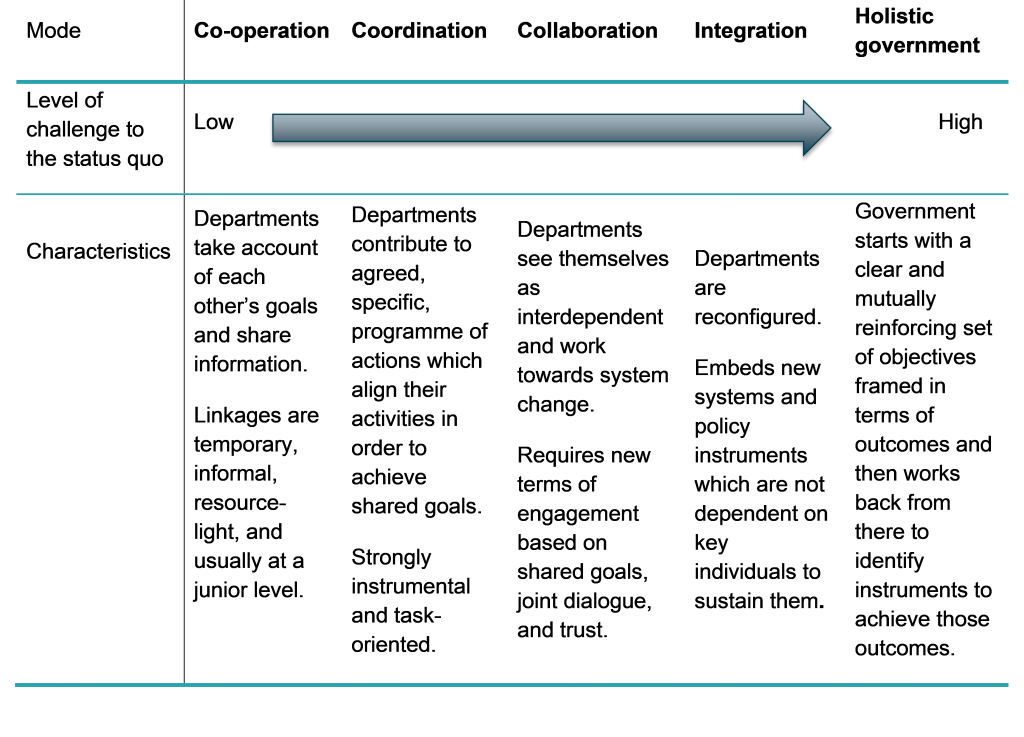Cross cutting working – making sure that different departments and services work effectively with each other – is a constant challenge for all governments, even when they are as comparatively small as the Welsh Government. Last year, we were commissioned by the First Minister to synthesise the evidence on cross-cutting working, and our latest report, Improving Cross-Cutting Working, encapsulates the main findings from our research, as well as the key points from a seminar which we held with senior members of the Welsh Government Civil Service and external experts.
The research repeatedly shows that effective cross-cutting working requires:
- Clearly stated and agreed aims;
- High level political support;
- The backing of senior officials;
- The commitment of key people in the agencies or departments which need to work together; and
- The allocation of adequate resources of time, money and capacity.
But it is important to remember that cross-cutting working, especially in its most ambitious forms, is neither a panacea nor a quick fix. It runs counter to the way in which government activity is usually organised, and sometimes there are very good reasons to keep departments apart; for example, to ensure that there is clear accountability, or to make the most of specialisation. So our first finding is that governments need to be very clear about what they are trying to achieve by promoting cross-cutting working, and to recognise that making it happen requires significant commitments. If they are not clear about the purpose of cross-cutting working, or are not willing to provide the managerial and political commitment required, it may well be wiser not to try to make changes.
Our second finding is that there is a wide range of modes of cross-cutting working. In this project, our main interest was in horizontal (working across departments) and strategic modes of developing policy, rather than in service provision. It is possible to think of the modes as a continuum, ranging from co-operation to holistic government.

As a rule, the more wide-ranging and intensive the mode of cross-cutting working, the greater its potential to disrupt existing systems, workloads, relationships, and cultures, and the greater the resources that it will demand.
Third, a variety of mechanisms have been used in cross-cutting government. Our research identified six broad categories, and the seminar was an opportunity to discuss these further. Every category has its own advantages and disadvantages: again, ministers and officials need to decide what is the aim of cross-cutting working in order to choose the most suitable mechanism(s) for a particular context.
Finally, our research, and the discussion in our seminar, suggests that Wales, as a small country with a small government, possesses many of the prerequisites for effective cross-cutting working. But cross-cutting working means making compromises between the priorities of the government as a whole and the priorities of individual ministers and departments, and cross-cutting plans often depend on the support of key individuals. So it is important both to understand the motivations of individuals, and to find ways of embedding cross-cutting working so that it becomes the norm.